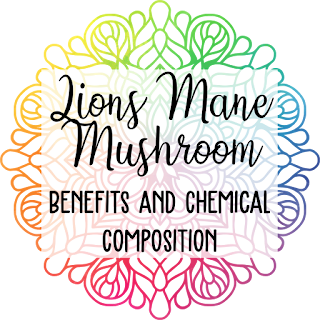Lions mane has been used traditionally in
both the Chinese & Japanese medical systems for hundreds of years. It is
used to nourish the gut, fortify the spleen and is nutritive to the five
internal organs (liver, lung, spleen, heart and kidney). It is well-known for
its affects on the central nervous system and other symptoms synonymous with deficiences
in the Qi
The
magical health benefits of Lions Mane;
•Anticancer
properties
•Promotes
healthy digestion and gut health
•Helps
fight fatigue and increase strength and vitality
•Helps
with gastric and duodenal ulcers as well as chronic gastritis
•Calms
and soothes the central nervous system
•Neuroprotective
and neurotrophic, helping to prevent and treat Alzheimer's, Parkinson's and
Dementia (A double-blind placebo clinical trial found that regular consumption
of Lions Mane markedly improved results of the Hasegawa Dementia Scale but
these effects decreased when dosage was stopped)
•Counteracts
neuron death
•Increases
the efficacy of free radical scavenging
•Anti-ageing
(by enhancing the activities of antioxidant enzymes in the skin)
•Protects
against oxidative stress
•Increases
concentration, memory and learning abilities
•Helps
prevent stress related cardiovascular disease
•Reduces
symptoms of anxiety and depression especially in menopausal women
•Anti-inflammatory
•Anti-bacterial
•Anti-fungal
•Contains
antitumor properties including Hemagglutinating
and antineoplastic properties (clumps and prevents, inhibits or halts tumor
activity)
•Stimulates
the synthesis of nerve growth factor (NGF)
•Helps
the treatment of leukemia (by enhancing the killing action of cancerous cells)
•Antimutagenic
(helps prevent DNA mutations)
•Increases
the numbers of lymphocytes and macrophages which boosts the immune system
•Enhances
cognitive functions
•Lowers
cholesterol
•Lowers
blood pressure
•Protects
the liver
•Helps
relieve insomnia and induce sound sleep
•
Chemistry of Lions Mane;
The typical composition of Lions Mane is
as follows;
•
•Carbohydrates
57%
•Fats
3.52%
•Fibre
7.81%
•Protein
22.3%
•Ash
9.35%
•Considerable
amounts of potassium and phosphorus
•Trace
amounts of manganese, copper and zinc
* These percentages are from the fruiting
body of Lions Mane, not the mycelium
Lions Mane also contains;
•
•19
amino acids including L-alanine, L-leucine, L-tryptophan and L-phenylaline.
Amino acids are the building blocks of protein which is essential for our
growth and development.
•32
aroma substances containing nitrogen or sulfur, ketones, esters and alcohols
•12
polysaccharides with the following activity; immunomodulatory (modulates the
immune system response), anticancer, anti-bacterial, gastroprotective,
cholesterol and triglyceride lowering, hepatoprotective
(protects the liver), blood glucose lowering.
•Hericenones
A-B have cytotoxic and anti-platelet aggravation properties (meaning anticancer
and helps increase heart health, reducing thrombosis and stroke risk)
•Hericenones
C-H and erinacines A-1
both have neuroprotective and neuroregenerative
properties which are used in the treatment of Alzheimer’s, Parkinson’s,
dementia and depression
•Hericirine
which reduces inflammatory inducing mediators and cytokines
•Poliphenols
which are antioxidants that helps protect against our skin ageing
As you can see, Lions Mane is an excellent adaptogen tonic that you can take daily to help nourish and protect the brain plus much, much more!



Comments
Post a Comment